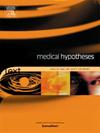细菌胞外囊泡在系统性红斑狼疮病理生理中的潜在作用
IF 0.8
4区 医学
Q3 MEDICINE, RESEARCH & EXPERIMENTAL
引用次数: 0
摘要
系统性红斑狼疮(SLE)是一种罕见的自身免疫性疾病,受多种因素影响,包括感染。在细菌或病毒感染后,主要由浆细胞样树突状细胞(pDCs)产生的IFN-I增加。IFN-I的过量产生已被证明可推动SLE的进展。最近的研究结果表明,狼疮肾炎患者中IFN-I的基因表达特征并不像预期的那样与pDCs共同发生;相反,它局限于与毛细血管相吻合的肾小球区域,提示可能来自血液。T细胞、自然杀伤细胞和髓系细胞也可能在血液中分泌IFN。血液中细菌的存在挑战了血液无菌的概念,提高了无细胞微生物成分(如细菌细胞外囊泡(BEVs))通过体循环引发过量IFN产生的可能性。虽然现有研究表明BEV在人类SLE中的作用,但实验证据尚未建立整个BEV纳米颗粒与疾病之间的直接关联。研究主要集中在(1)哺乳动物ev和(2)纯化eDNA和其他特定货物作为SLE进展的贡献者。这些细菌分子是否与囊泡膜(即bev)相关而发挥作用仍未得到证实。我们假设bev携带包括核酸在内的多种货物,可能进入体循环,诱导细胞反应导致IFN过量产生,并加剧SLE的严重程度。临床研究可以通过监测bev在血液样本中的存在和数量来研究bev与SLE进展的关系,并将这些因素与疾病结局联系起来。此外,了解bev的参与可能有助于识别SLE生物标志物,为感染预防策略提供信息,并激发bev中和剂的开发。本文章由计算机程序翻译,如有差异,请以英文原文为准。
Potential role of bacterial extracellular vesicles in the pathophysiology of systemic lupus erythematosus
Systemic Lupus Erythematosus (SLE) is a rare autoimmune disorder influenced by various factors, including infections. Following bacterial or viral infections, there is an increase in IFN-I production, primarily by plasmacytoid dendritic cells (pDCs). Overproduction of IFN-I has been shown to drive the progression of SLE. Recent findings indicate that the gene expression signature of IFN-I in lupus nephritis patients does not co-occur with pDCs as expected; instead, it is localized in glomerular regions with anastomosing capillaries, suggesting a potential source from the blood. T cells, natural killer cells, and myeloid lineage cells may also secrete IFN in the bloodstream. Bacterial presence in the bloodstream challenges the concept of blood sterility, raising the possibility that cell-free microbial components, such as bacterial extracellular vesicles (BEVs), could trigger excessive IFN production through systemic circulation. While existing studies suggest a role for BEVs in human SLE, experimental evidence has yet to establish a direct association between the entire BEV nanoparticle and the disease. Research has primarily focused on (1) mammalian EVs and (2) purified eDNA and other specific cargoes as contributors to SLE progression. It remains unproven whether these bacterial molecules exert their effects while associated with vesicular membranes, i.e., BEVs. We hypothesize that BEVs, which carry diverse cargoes including nucleic acids, may enter systemic circulation, induce cellular responses leading to IFN overproduction, and exacerbate SLE severity. Clinical studies could investigate the association of BEVs with SLE progression by monitoring their presence and quantity in blood samples and correlating these factors with disease outcomes. Furthermore, understanding the involvement of BEVs may aid in identifying SLE biomarkers, inform infection prevention strategies, and inspire the development of BEV-neutralizing agents.
求助全文
通过发布文献求助,成功后即可免费获取论文全文。
去求助
来源期刊

Medical hypotheses
医学-医学:研究与实验
CiteScore
10.60
自引率
2.10%
发文量
167
审稿时长
60 days
期刊介绍:
Medical Hypotheses is a forum for ideas in medicine and related biomedical sciences. It will publish interesting and important theoretical papers that foster the diversity and debate upon which the scientific process thrives. The Aims and Scope of Medical Hypotheses are no different now from what was proposed by the founder of the journal, the late Dr David Horrobin. In his introduction to the first issue of the Journal, he asks ''what sorts of papers will be published in Medical Hypotheses? and goes on to answer ''Medical Hypotheses will publish papers which describe theories, ideas which have a great deal of observational support and some hypotheses where experimental support is yet fragmentary''. (Horrobin DF, 1975 Ideas in Biomedical Science: Reasons for the foundation of Medical Hypotheses. Medical Hypotheses Volume 1, Issue 1, January-February 1975, Pages 1-2.). Medical Hypotheses was therefore launched, and still exists today, to give novel, radical new ideas and speculations in medicine open-minded consideration, opening the field to radical hypotheses which would be rejected by most conventional journals. Papers in Medical Hypotheses take a standard scientific form in terms of style, structure and referencing. The journal therefore constitutes a bridge between cutting-edge theory and the mainstream of medical and scientific communication, which ideas must eventually enter if they are to be critiqued and tested against observations.
 求助内容:
求助内容: 应助结果提醒方式:
应助结果提醒方式:


